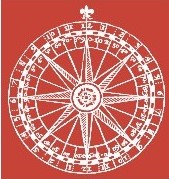Confraternal Organisation in Early Modern Malta
This article analyses how Maltese confraternities were set up, their composition and their internal organization. Most were inclusive and comprised the adult population of the parish, both males and females though a few companies were restricted to…
তালিকাভুক্ত Article | গোষ্ঠী দ্বারা প্রকাশনা Iter Community
সংস্করণ 1.0 - প্রকাশিত উপরে 13 Jul 2025
লাইসেন্সকৃত Creative Commons BY-NC 4.0
বর্ণনা
This article analyses how Maltese confraternities were set up, their composition and their internal organization. Most were inclusive and comprised the adult population of the parish, both males and females though a few companies were restricted to the elite or to particular craftsmen. They cooperated with each other and could even allow their members to join other companies, but they could also be great rivals. The Council of Trent had put parish priests at their head, but the brothers contested their leadership and were frequently in dispute with them. At the end of the eighteenth century the confraternal movement was in decline in Europe, but in Malta the brotherhoods remained active.
এই কাজটি উদ্ধৃত করুন
গবেষকদের এই কাজটি উদ্ধৃত করতে নিম্নলিখিতভাবে উল্লেখ করতে হবে:
ট্যাগ
নোটস
Original publication: Ciappara, Frans. “Confraternal Organisation in Early Modern Malta.” Confraternitas 29 (1): 2018. 3-30. DOI: . This material has been re-published in an unmodified form on the Canadian HSS Commons with the permission of Iter Canada / Confraternitas. Copyright © the author(s). Their work is distributed by Confraternitas under a Creative Commons Attribution-NonCommercial 4.0 International License. For details, see https://creativecommons.org/licenses/.
প্রকাশনা প্রাকদর্শন
Iter Community
This publication belongs to the Iter Community group.
When watching a publication, you will be notified when a new version is released.
